Pruning grapes in summer
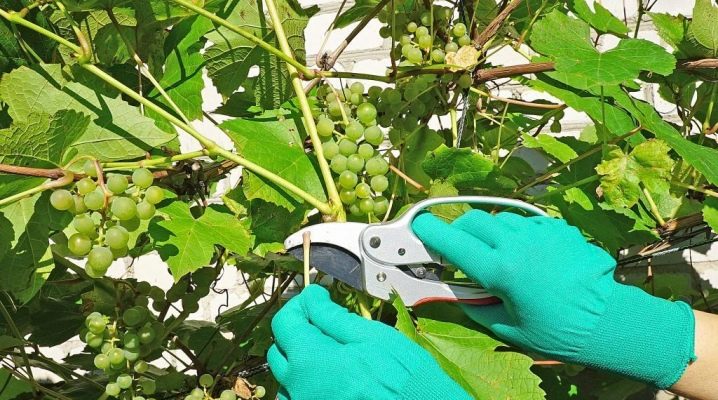
The grape is a fast growing plant, and if not properly cared for, it will devote all of its inner resources to the emergence of fresh vines. Thus, in order to achieve a plentiful and tasty harvest, the gardener needs to "adjust the priorities" of this garden culture, directing its forces not to growth, but to the formation of new bunches. For these purposes, grapes are pruned in the summer. The article provides a description of this procedure with all the small nuances, indicates the time frame in which it is necessary to carry out certain manipulations, and also gives recommendations for caring for grape bushes after they have been pruned.
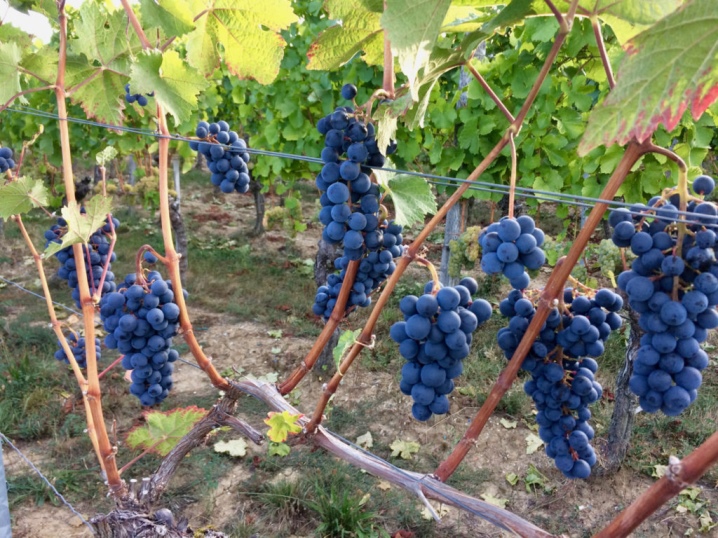
What is it for?
Pruning grapes in summer is one of the essential components in caring for this plant. If you do not follow it, the bushes will grow uncontrollably, while yielding a meager harvest of small and sour fruits. In general, this procedure leads to the following results:
-
bountiful harvest;
-
large and sweet berries;
-
fast ripening of fruits;
-
high ventilation of the plant;
-
resistance to various diseases;
-
simplification of bush care;
-
free access of sunlight to stems and bunches;
-
high rate of circulation of nutrients inside the plant;
-
improving the aesthetic appearance of the vineyard.
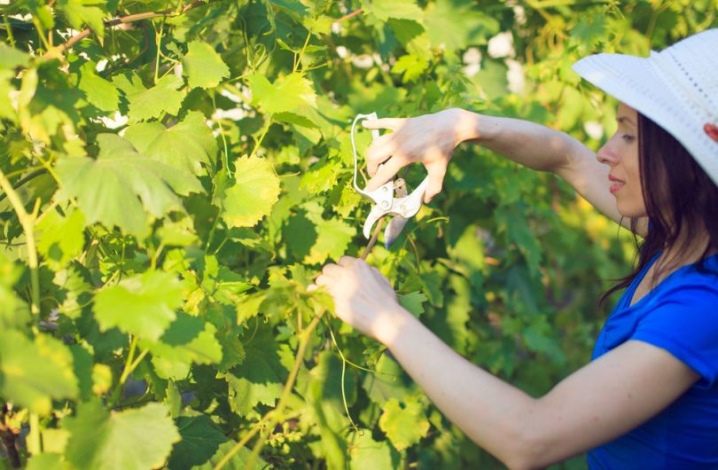
It may seem to the novice gardener that the presence of a large number of fruiting arrows automatically eliminates the need for grape pruning. Indeed, in this case, the harvest will be plentiful, but the taste and size of the berries will leave much to be desired, because all the nutrients that the bush receives from the soil go into growth, and not into the formation of fruits.
Another possible option is the complete absence of fruits in the presence of a large number of leaves, high density and branching of the plant.
From this it follows that the main task of pruning grapes is to maintain a balance between empty and fertile vines during the period of active life of the plant.
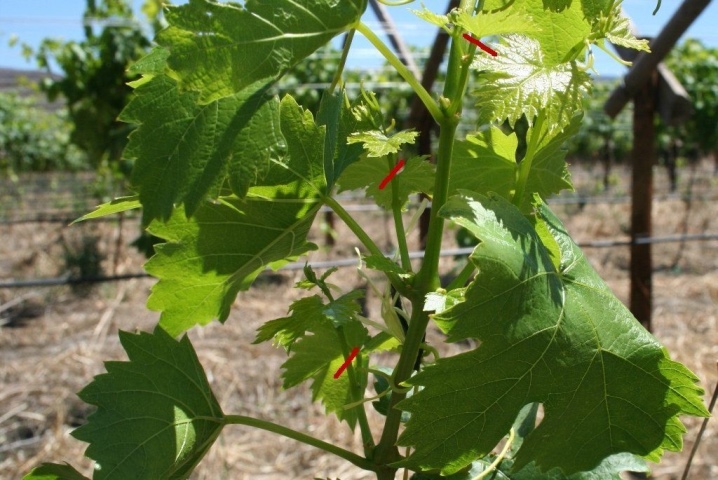
The advantage of this procedure is the ability to carry it out both with the help of garden tools and without them (we will talk about this in more detail below). And also the positive aspects include the availability of temporary resources. - grape pruning is carried out from June to August, which allows the gardener to calmly allocate time for certain procedures.
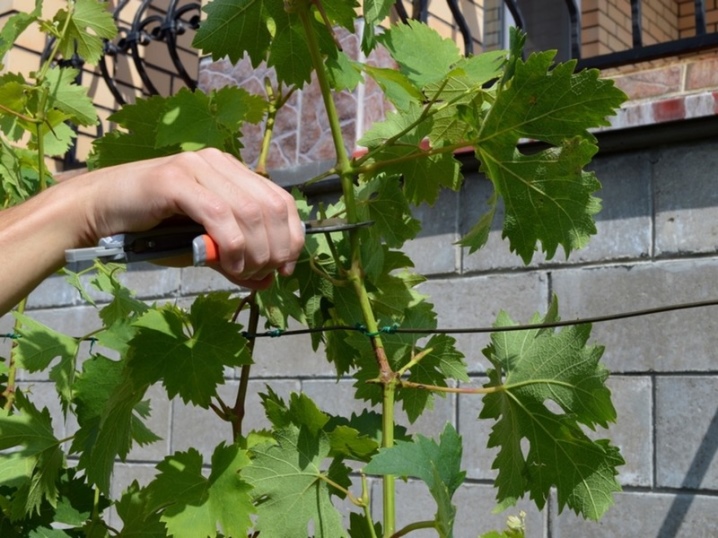
In general, caring for grapes in the summer requires daily effort and attention. If you are not serious about this garden culture, then the primary consequences will be a meager harvest (or its complete absence) and the neglected appearance of the garden plot itself. At the same time, the efforts and time invested by the gardener pay off with interest - thanks to pruning and proper care in the summer period from August to November, the bushes will be strewn with large clusters with large and sweet berries.
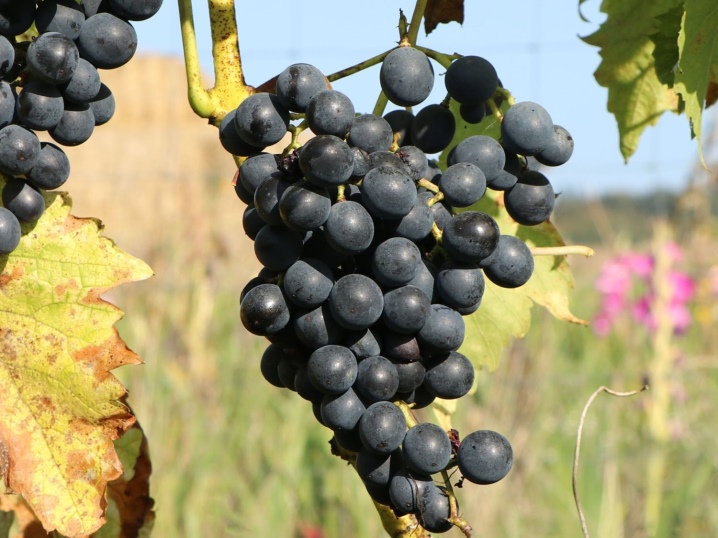
Timing
In summer, grape bushes should be pruned both before and after flowering, as well as during the appearance of brushes (in the case of unnecessary shoots). In other words, you need to prune the grapes for all three months - in June, July and August.
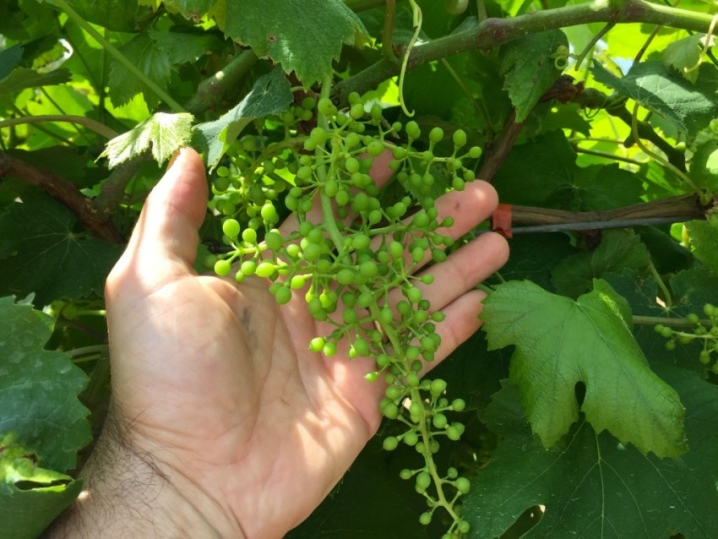
June pruning consists in the following manipulations - breaking off young shoots and tying a fruiting stem. Thanks to these actions, the load of the hands with an ovary and empty processes is evenly distributed.And also this month, replacing shoots are laid, in the place of which, after 1 year, fertile branches are formed.

In the middle of summer, when the grapes have bloomed, experts advise removing unnecessary stepchildren, treating the plant from pests, and fertilizing the soil. As a result, this care leads to a sweet and bountiful harvest.
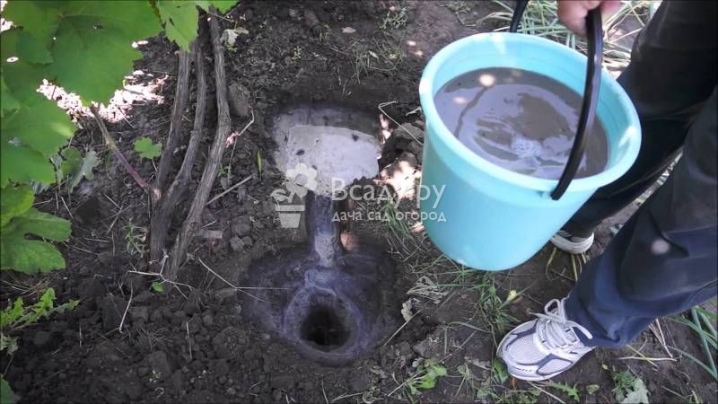
The August pruning of young shoots is carried out by the method of chasing. In addition, experienced gardeners recommend removing several upper roots at the end of summer to improve the functioning of the lower rhizome.
At the discretion of gardeners, the question of removing the grape tendrils remains - if the bush is tied to a support, you can get rid of the mustache.
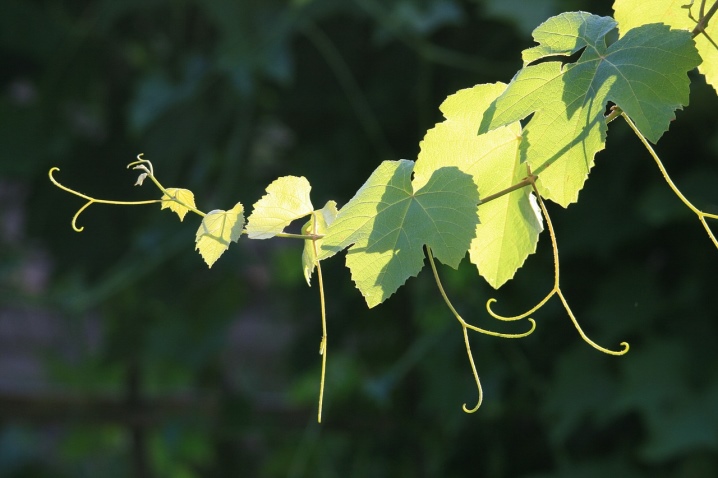
Views
First of all, it should be noted that within two years after planting this garden crop, regardless of the variety, the plant is pruned according to one algorithm, which includes the following features:
-
preliminary planning of the future form of the grape bush;
-
when planning to cover a bush for the winter, shortening the maximum plant stem;
-
removing a vine that has wintered for two seasons, since it will no longer produce berries;
-
preservation of 8 eyes or more during cutting of fruiting arrows.
Formally, the process of summer pruning of grapes is divided into 4 stages: removal of stepsons, pinching, clarification and chasing. Below is a step-by-step description of how to carry out these procedures. These tips can be useful for both novice gardeners and people with experience in this business.
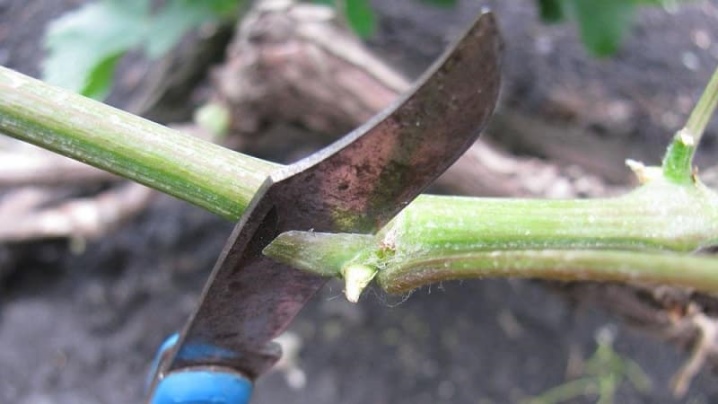
Removing stepchildren
Experts advise getting rid of unnecessary shoots in July after the bushes have faded. As a result of this procedure, the plant gains access to the required amount of sunlight, due to which the berries acquire sweetness, and the bush itself becomes more resistant to various diseases.
It is not recommended to cut the stepsons to the very base - it is better to leave a process about 15-20 mm from the first sheet.
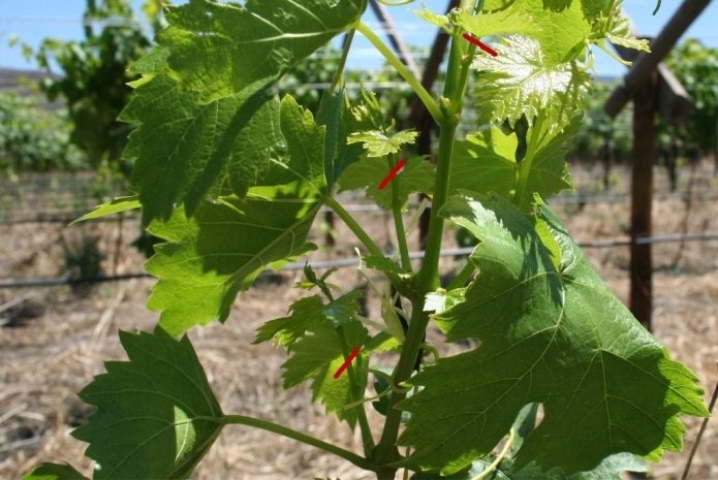
Since grapes are a fast-growing plant, the bushes must be inspected every week to make it easier and more convenient to thin out stepchildren, which appear within 2-3 days after pruning.

Pinching
The pinching is carried out in order to improve the fruitful qualities of the plant. This pruning method slows down the growth of the shoots, so that the nutrients that previously helped the plant to form new branches are used for the growth of future brushes.
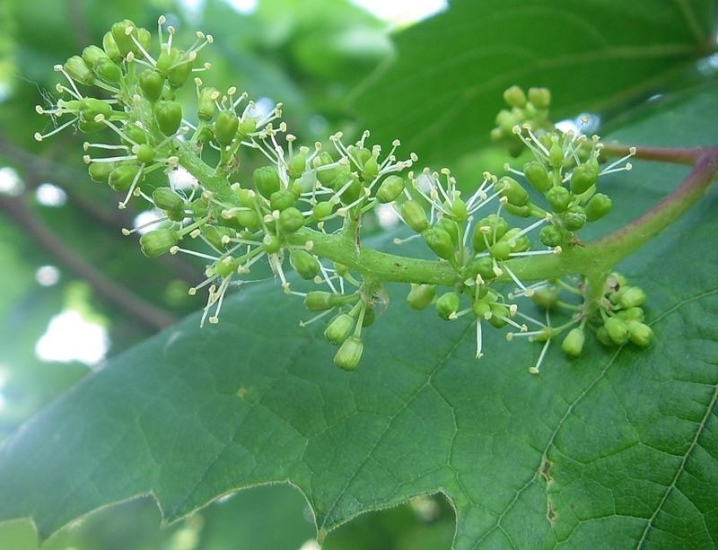
The pinching is carried out before the grapes begin to bloom - the upper part of the young shoot (9.5-10.5 cm to the beginning of the stiff section of the stem) is pinched with two fingers.
This procedure should be carried out every 10-12 days.
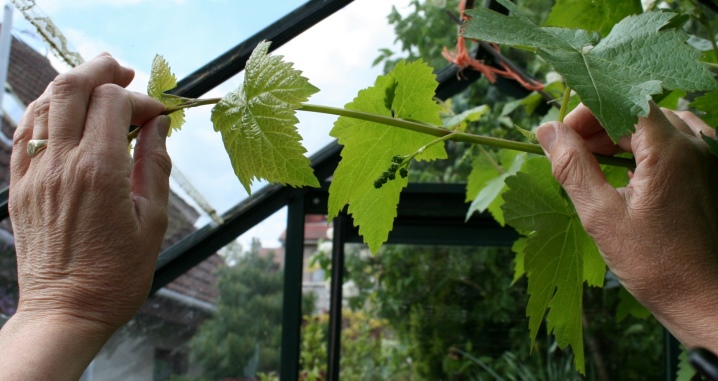
Lightening
This type of pruning is carried out, as a rule, during the ripening of the brushes and consists in thinning the foliage, as a result of which the blowing capacity of the plant, as well as of the bunches, increases, thereby improving the quality of the crop. Experienced gardeners recommend leaving a maximum of three clusters on strong shoots, and one on weak ones.
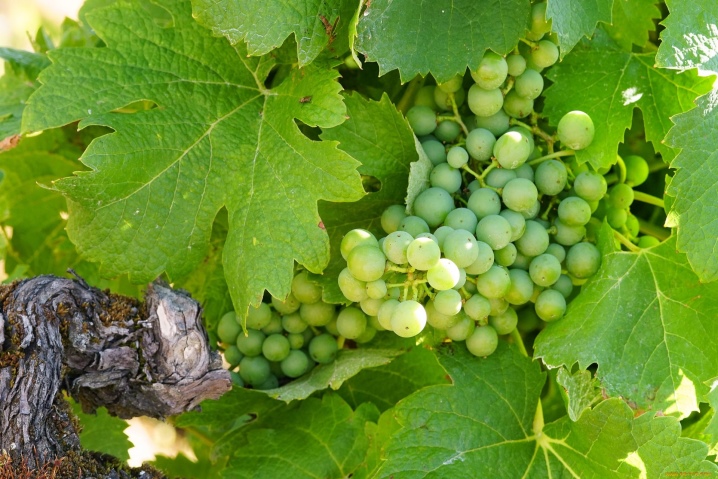
It is common for many beginners to leave trimmed leaves on the ground near the roots of the bush - this is wrong, as the foliage can form clumps of bacteria that can later infect the grape bush.
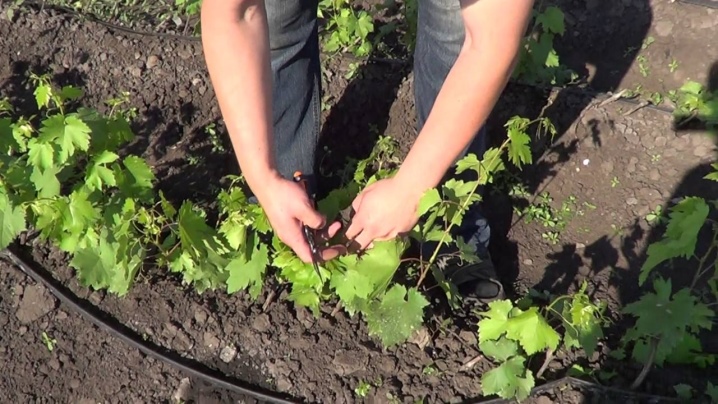
Chasing
The embossing procedure has common stages with pinching, but in this case, the top of the shoot should be removed by about 40 cm. As a rule, minting is carried out in August in order to speed up the ripening process of berries.
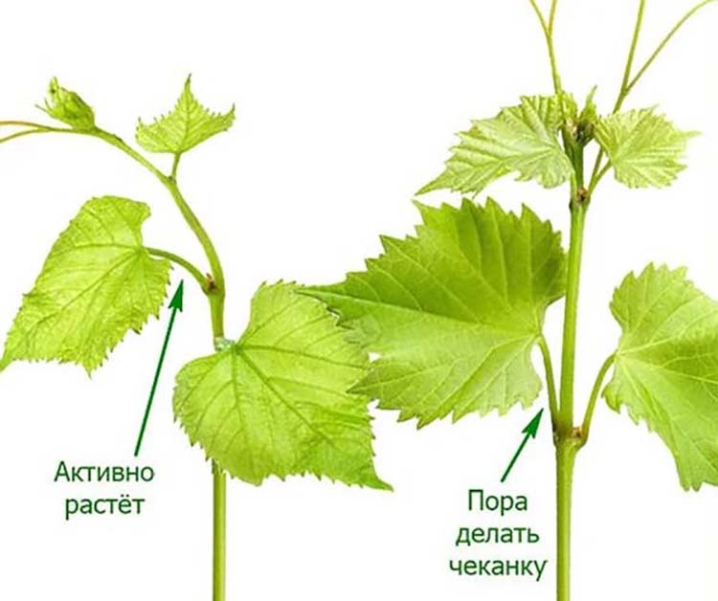
Features of the minting of the grape bush:
-
an average of 14 leaves must be left on the plant;
-
it is not recommended to shorten the shoots too much, as well as carry out the procedure itself until August, otherwise this will lead to intensive formation of stepsons and delayed maturation of brushes;
-
it is impossible to carry out pruning on diseased bushes, in dry and hot weather, as well as in areas with a close location of groundwater.

Before cutting the bush, working tools (knives, secateurs) must first be disinfected and sharpened. WITHIt should be remembered that the cuts must be on the inner side of the shoot and be smooth - otherwise, a sharp decrease in yield is possible due to poor circulation of the internal plant juices containing various nutrients. And also pruning grapes can be done with bare hands by breaking off unnecessary shoots.
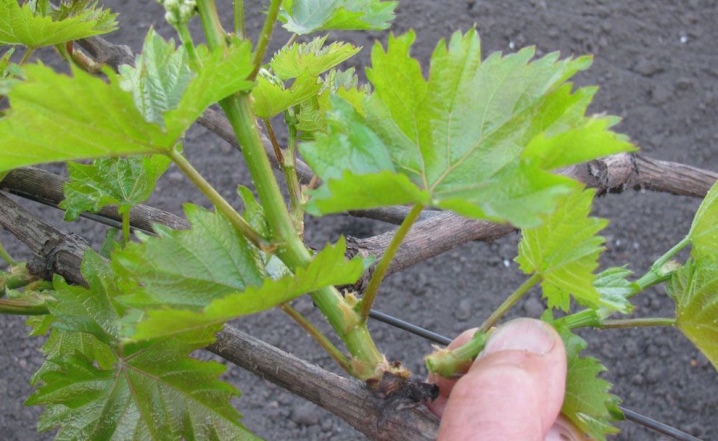
Follow-up care
In the summer, after pruning, the plant should be looked after:
-
water abundantly (1 bucket of water per 1 grape bush);
-
fertilize (ammonium sulfate, ammonium nitrate, superphosphate);
-
loosen the ground around the plant after watering and the introduction of liquid fertilizers;
-
mulch the ground;
-
tie to vertical supports if necessary.
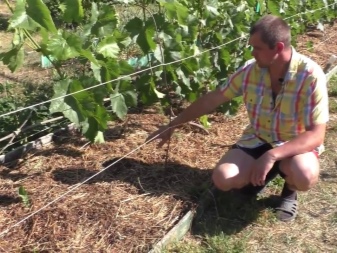
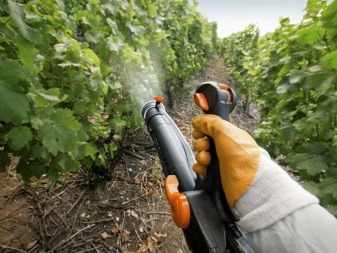
Pruning grapes is a necessary procedure, but it can weaken the plant and reduce its resistance to various diseases, in particular, fungal infections. To avoid this, the bush should be treated with fungicidal agents. If an initial lesion with gray rot is detected, the plant should be sprayed with a manganese solution, and the bunches should be sprayed with ordinary baking soda.
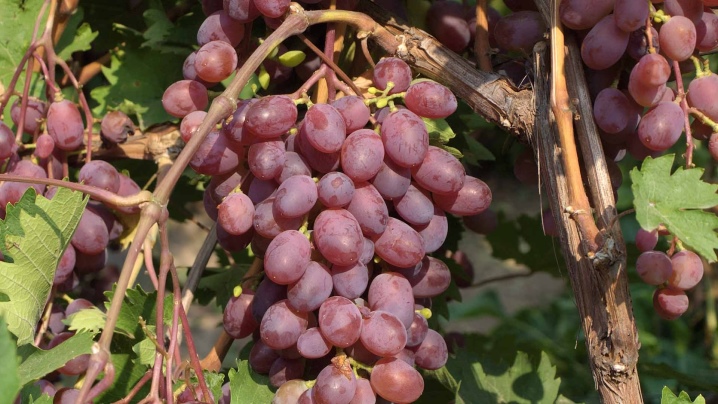










The comment was sent successfully.